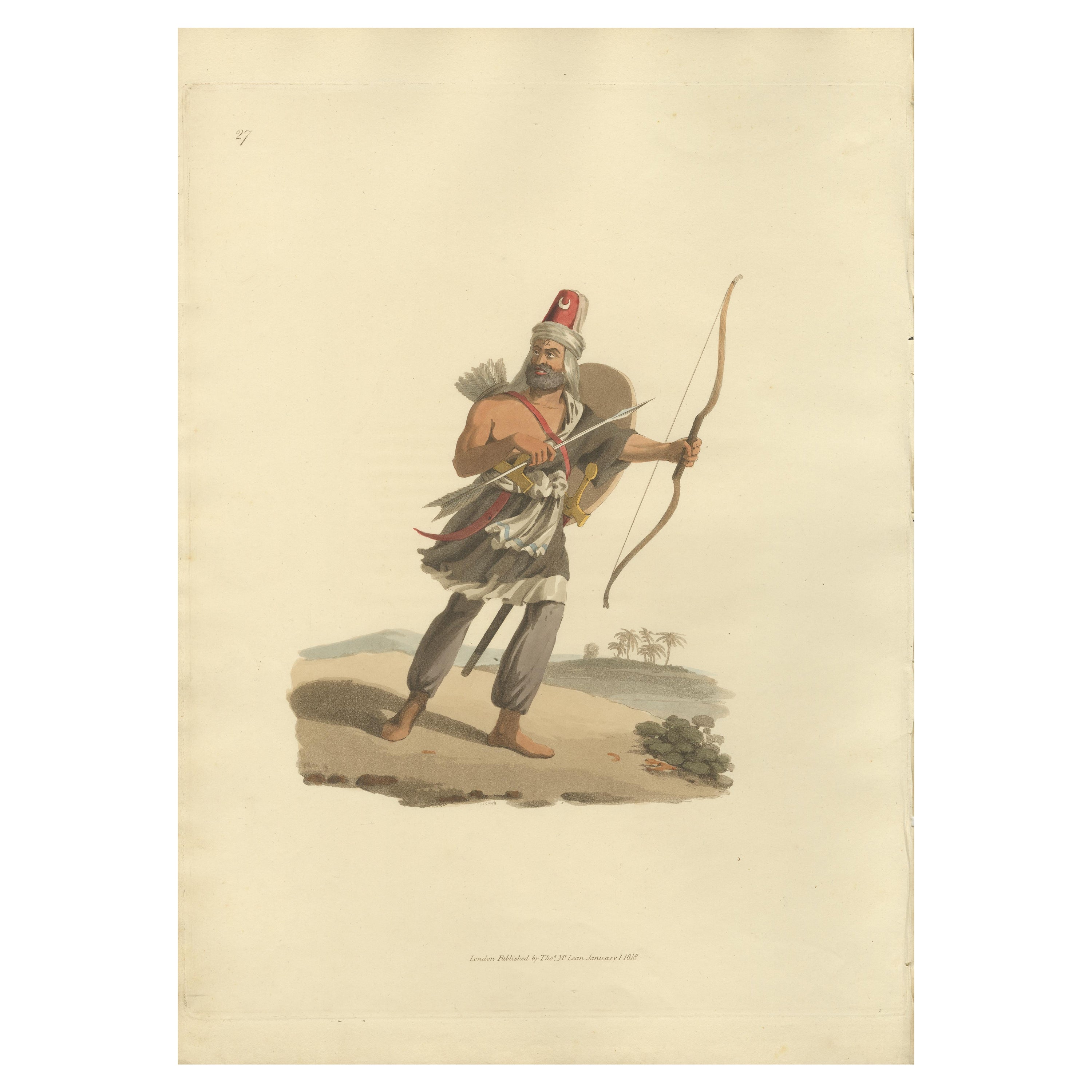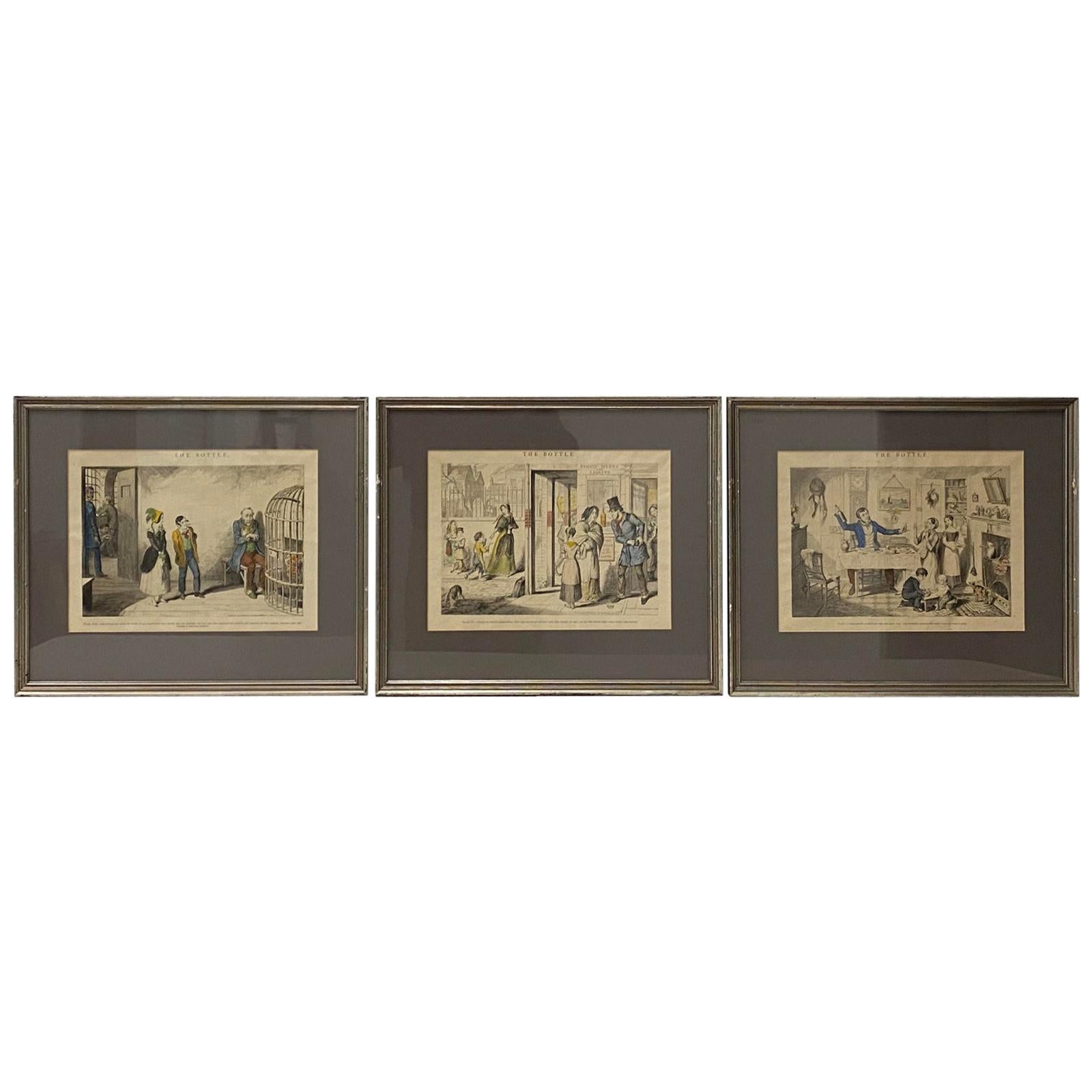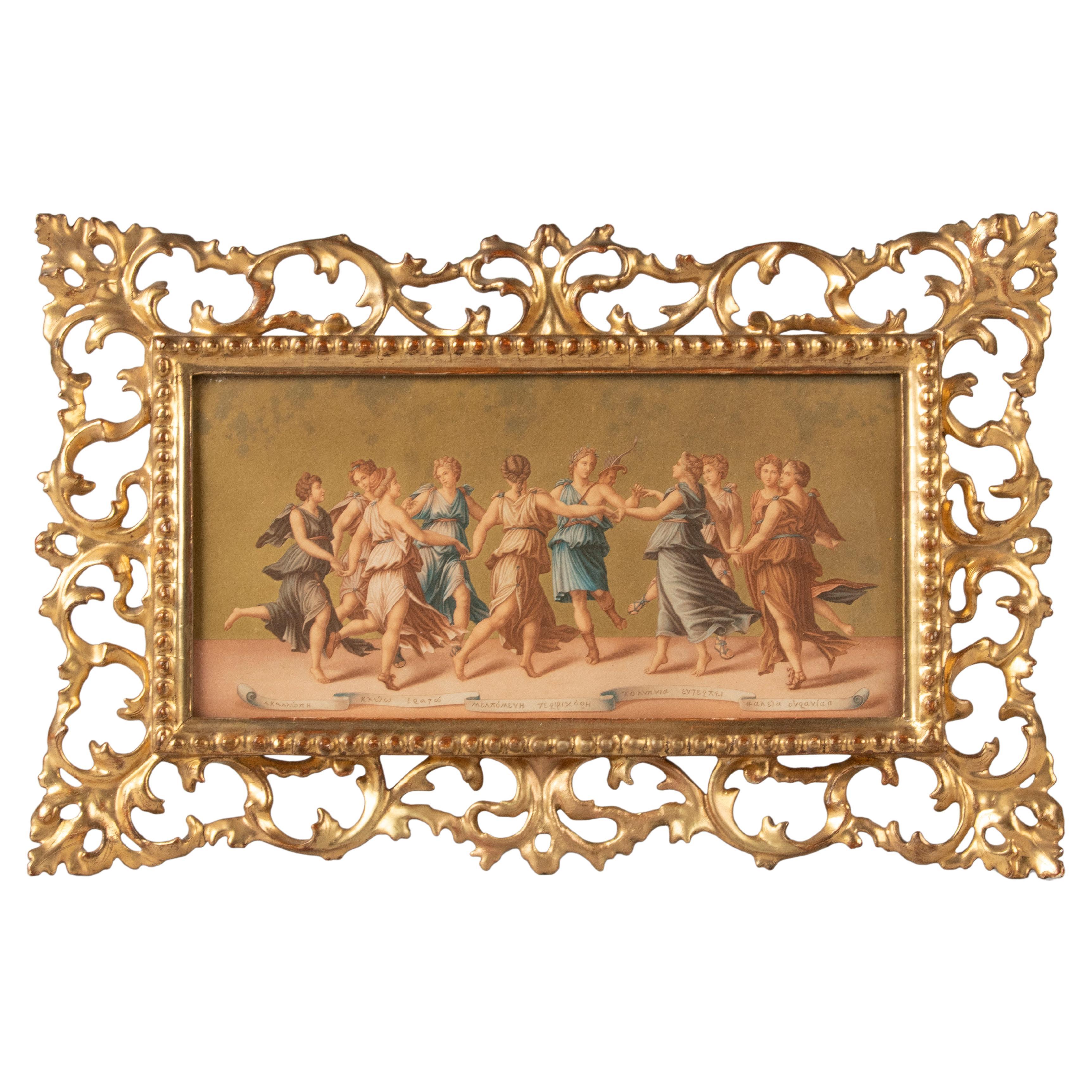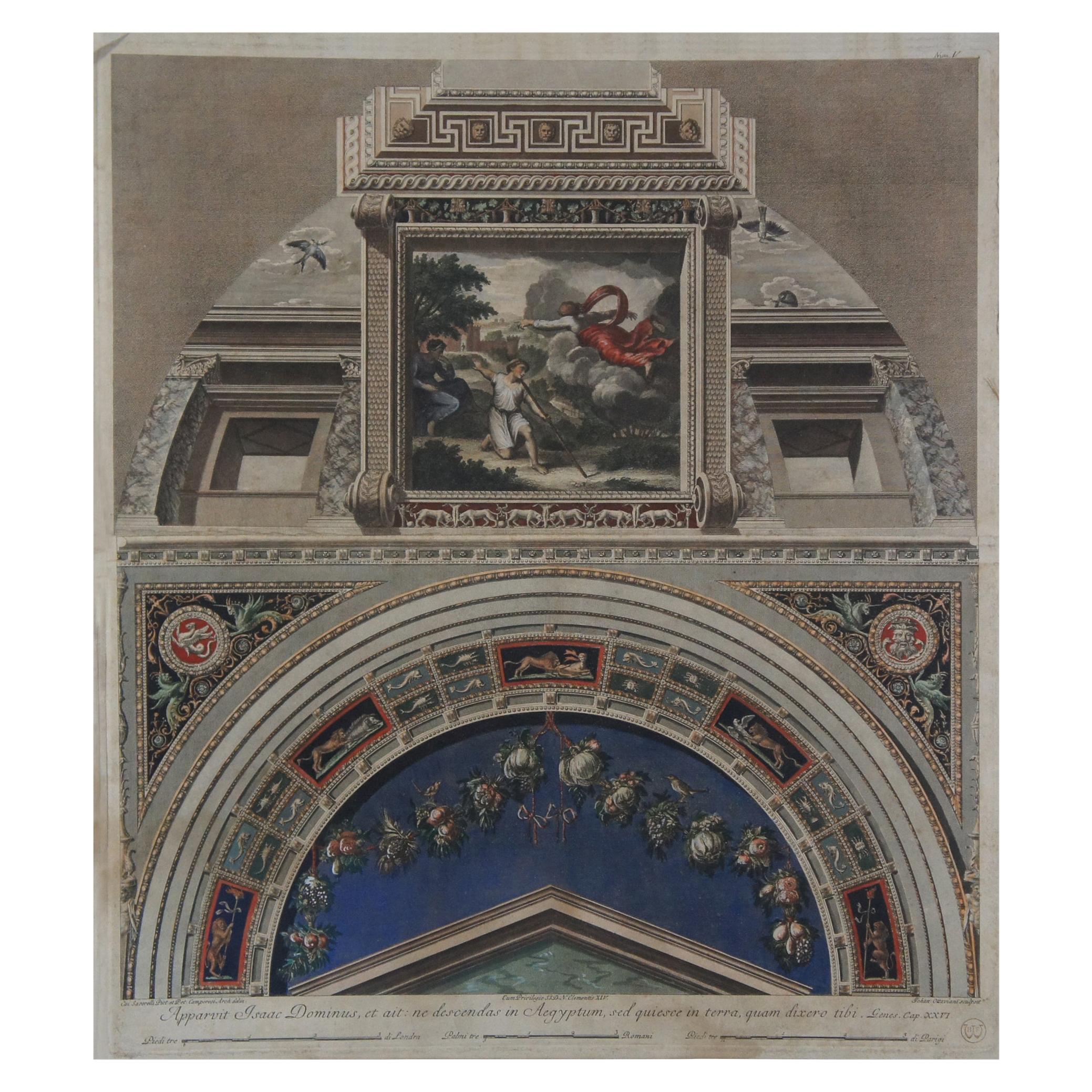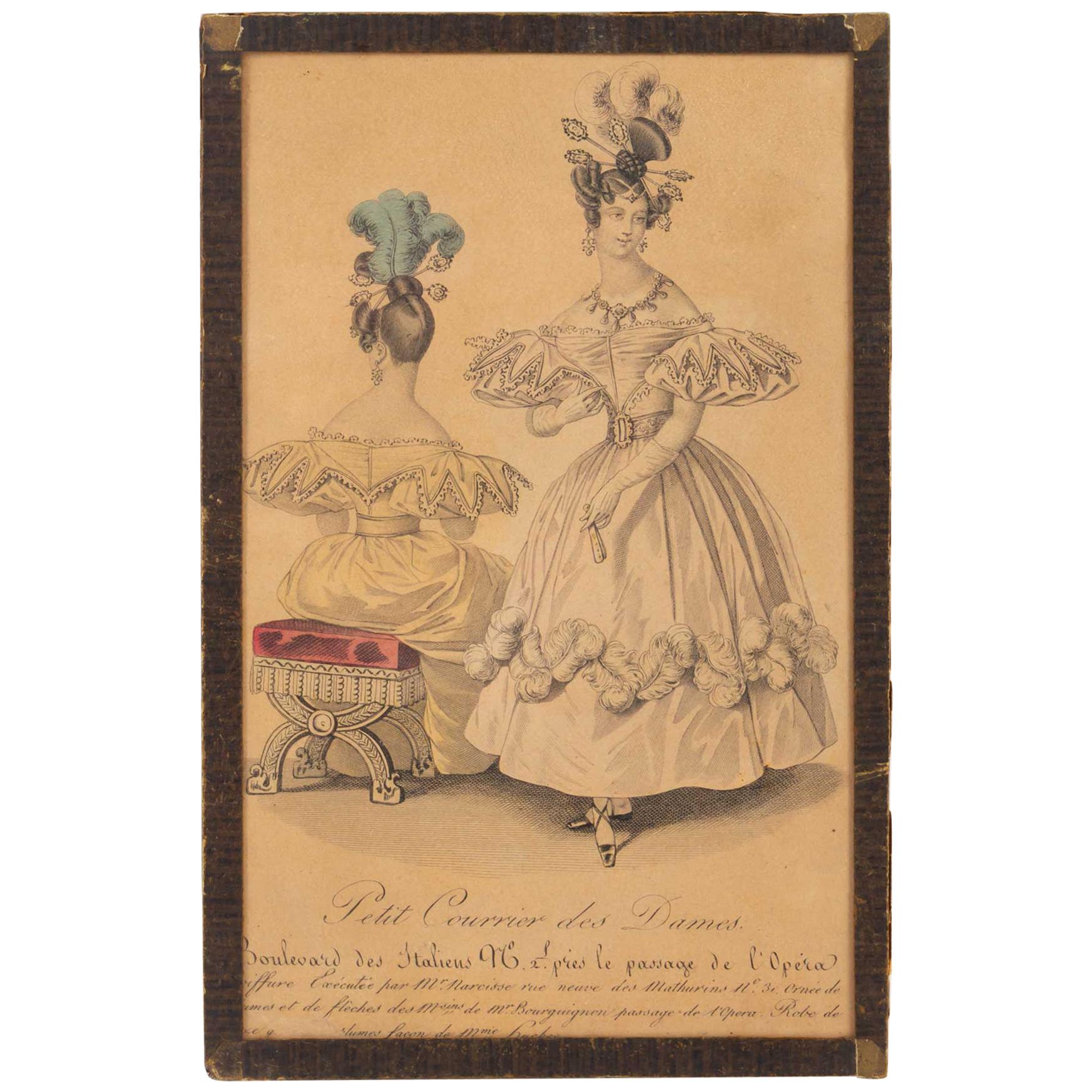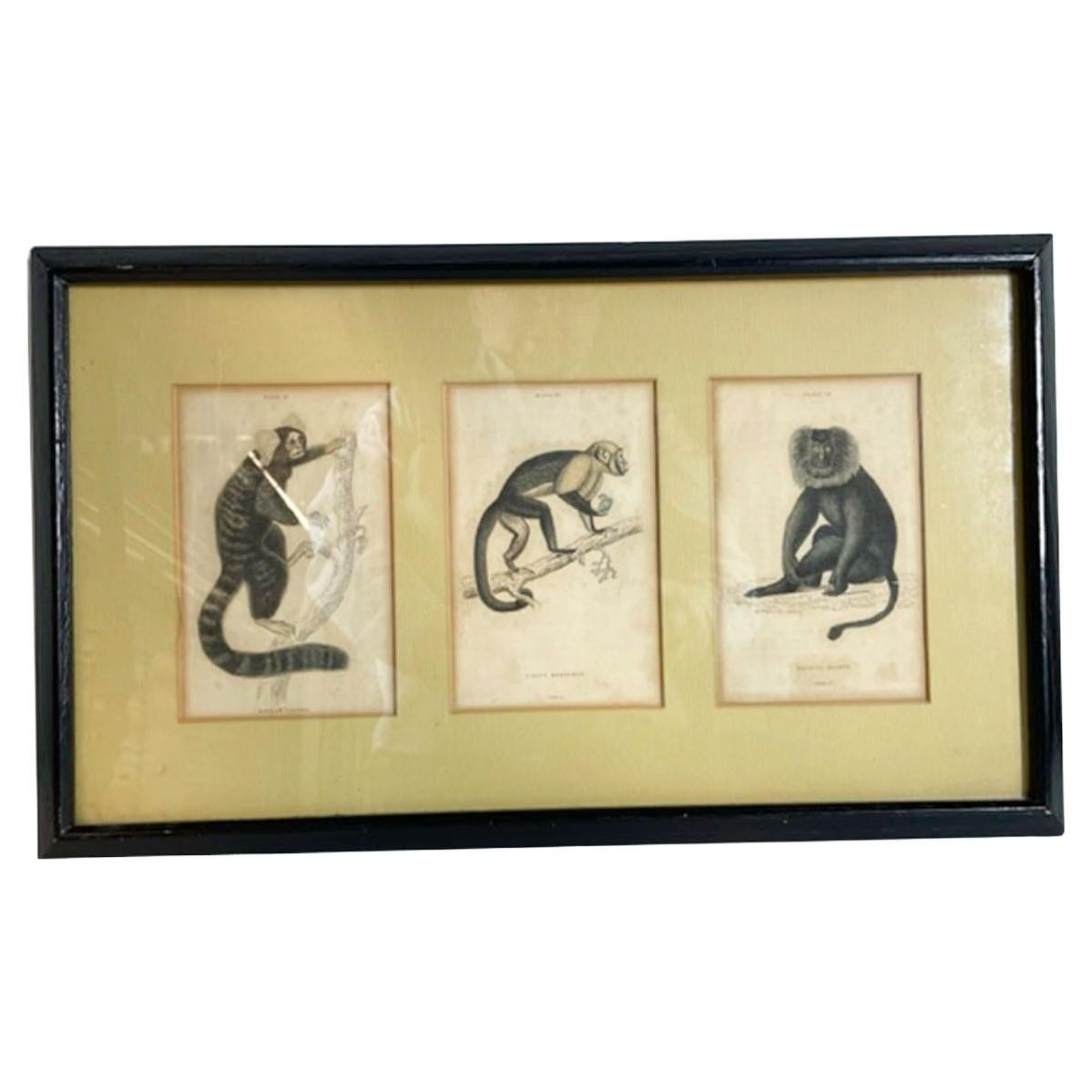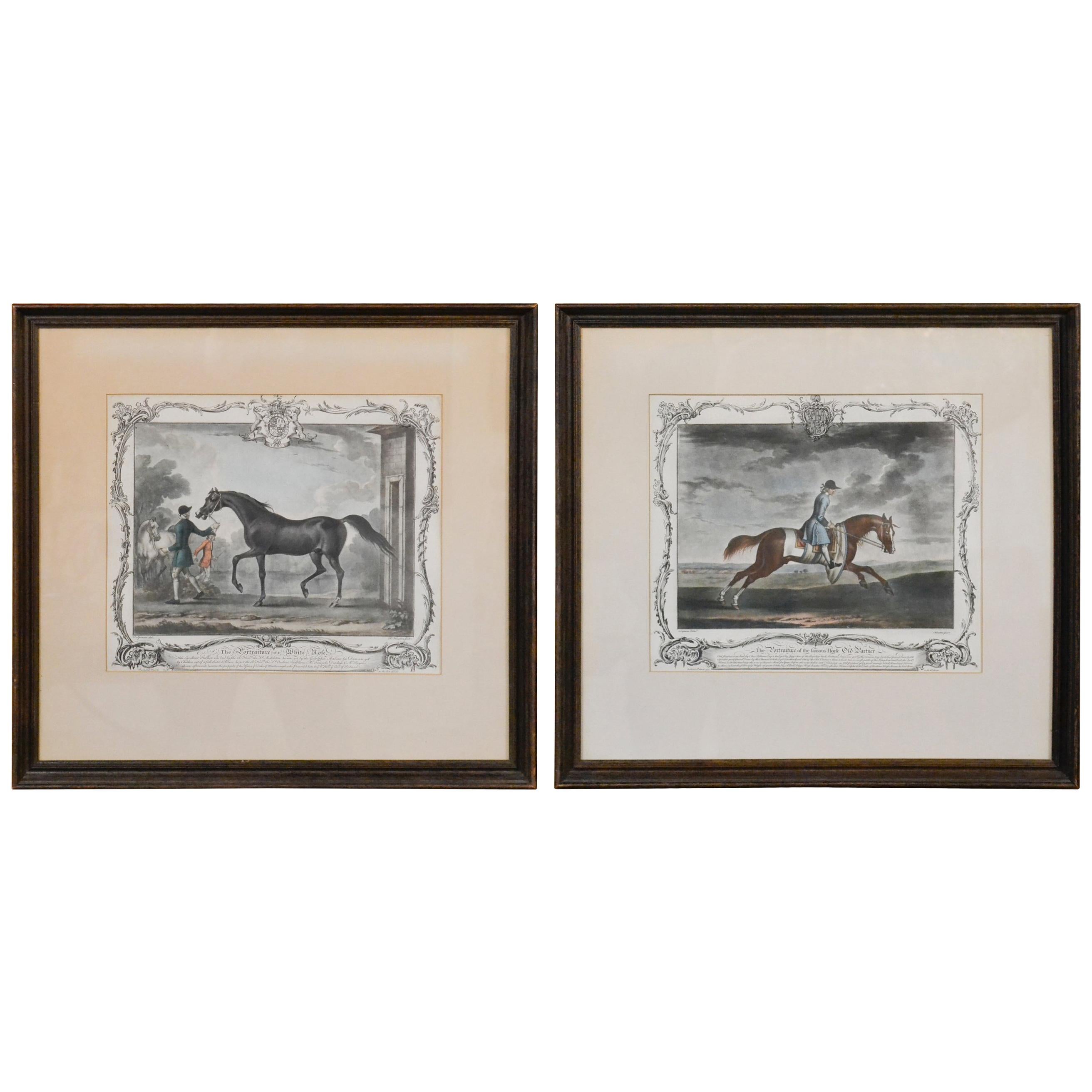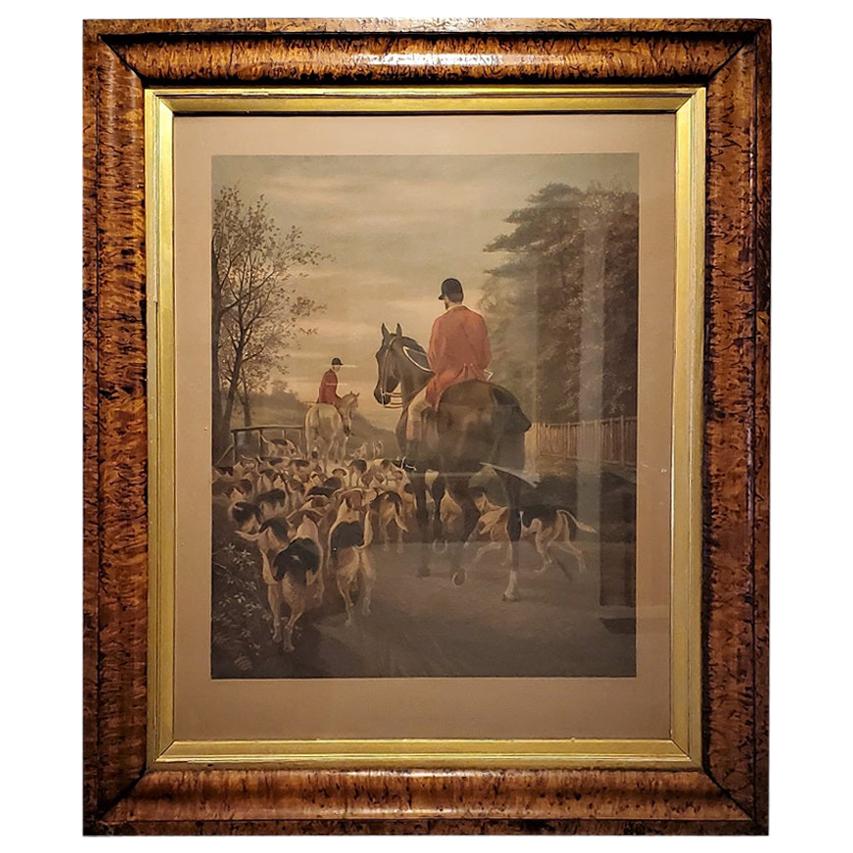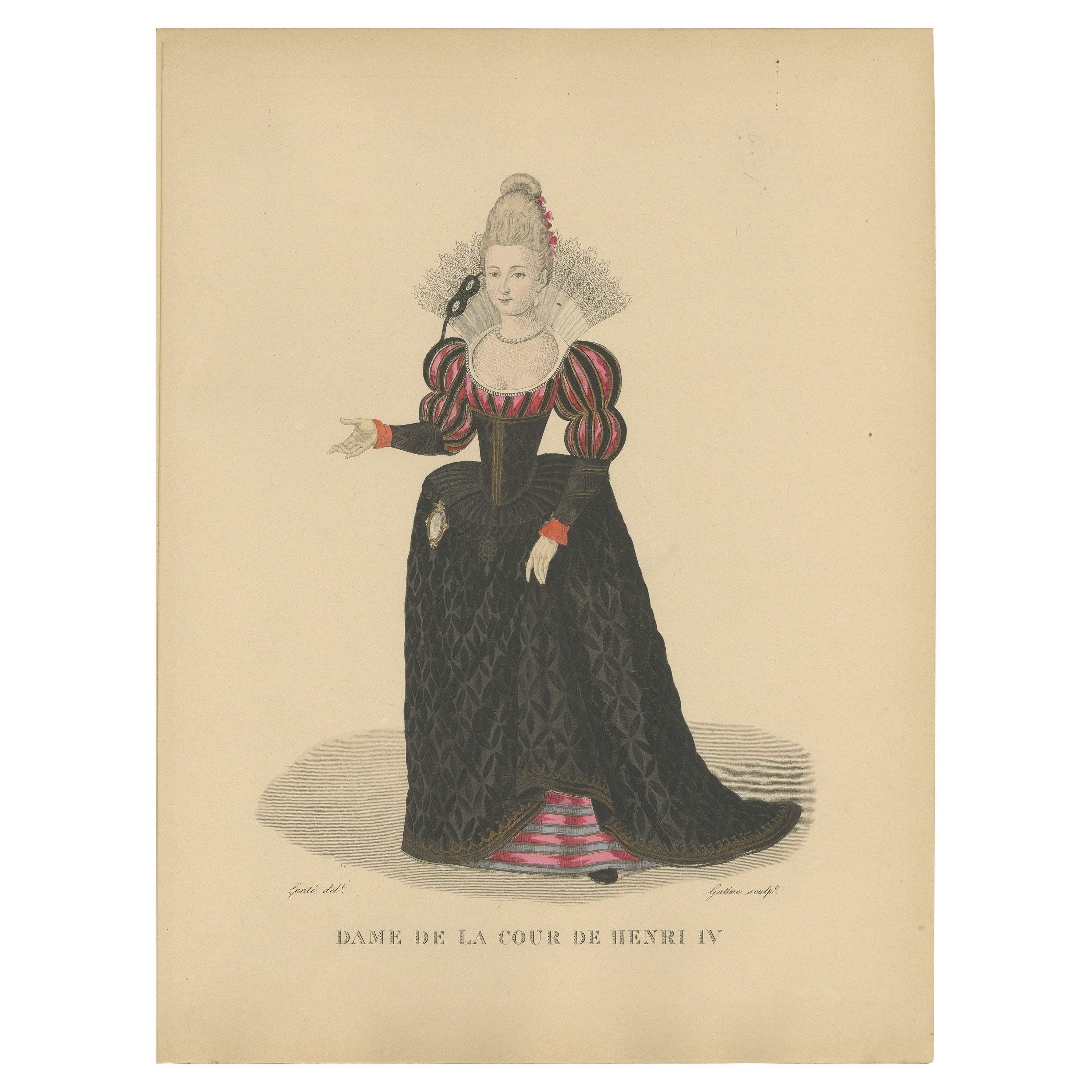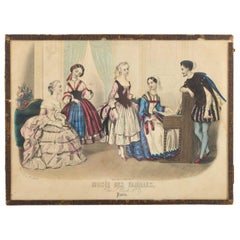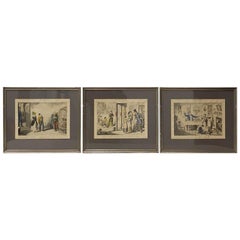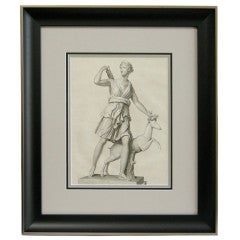
19th Century Engraving of "Diana at the Hunt" (GMD#2897)
View Similar Items
1 of 5
19th Century Engraving of "Diana at the Hunt" (GMD#2897)
About the Item
- Dimensions:Height: 23 in (58.42 cm)Width: 20 in (50.8 cm)Depth: 1.5 in (3.81 cm)
- Materials and Techniques:
- Place of Origin:
- Period:
- Date of Manufacture:19th Century & Later Frame
- Condition:Wear consistent with age and use. Good. Clean and professionally framed recently.
- Seller Location:Los Angeles, CA
- Reference Number:Seller: 28971stDibs: U12040581851833
You May Also Like
- 19th Century Engraving, under Glass, Depicting "the Family Museum"Located in Saint-Ouen, FR19th century engraving, under glass, depicting "The Family Museum". Measures: H 21cm, L 14cm, P 1cmCategory
Antique 1870s French Napoleon III Prints
MaterialsPaper
- 19th Century Engraving Ottoman Empire Janizary of Arabia, 1818Located in Langweer, NLPETREA, which is the smallest of the three Arabias, is barren. Deserta, obtains its name from the poverty of its soil, excepting the vicinity of the Euphrates, the country being a sandy desert. Felix, is named from the fertility of its soil, which, compared with the others, is rich and worthy cultivation; the inhabitants, nevertheless, lead wandering lives for the purpose of pasturing their flocks, or become robbers, as the caravans passing between Bassora and Aleppo, or Egypt and Mecca, frequently experience. The celebrated Mahomet was a native of this country, by whose arms, and those of his followers, the faith which he inculcated has been spread over so large a portion of the globe. The chief who has the government of Arabia Felix...Category
Antique 1810s Prints
MaterialsPaper
- Set of Three "Temperance" Color Engravings by Cruikshank, 19th CenturyLocated in San Francisco, CASet of three "Temperance" color engravings by Cruikshank, 19th century Each measures 13" x 9". The frames measure 20.5" x 17.5". Offered as a set of three only. Good antique...Category
Antique Late 19th Century English Prints
MaterialsPaper
- Late 19th Century Engraving of Greek Graces in Gold Leaf FrameLocated in Casteren, Noord-BrabantBeautiful antique frame with a print of dancing Greek graces. The frame is made of wood, with refined carving and graceful curls. The wood is decorated with stucco and gilded with gold leaf. The print is also interesting, it is an antique print with beautiful gold print, depicting the dancing graces...Category
Antique 1890s French Rococo Decorative Art
MaterialsGold Leaf
- 17th Century "Diana's Deer and Boar Hunt" Etching by Antonio TempestaBy Antonio TempestaLocated in Cagliari, ITA fine mythological etching by the great Italian engraver Antonio Tempesta (Florence, 1555 – Rome, 5 August 1630) printed by François L'Anglois or Langlois (12 May 1589 (baptised) – 13 January 1647),also called F. L. D. Ciartres (" Francois Langlois from Chartres"). Beautiful sheet , very sharp . The dimensions below are inclusive of the frame, the print without the frame measures 27x19 cm Antonio Tempesta, also called il Tempestino (1555 – 5 August 1630), was an Italian painter and engraver, whose art acted as a point of connection between Baroque Rome and the culture of Antwerp. Much of his work depicts major battles and historical figures. He was born and trained in Florence and painted in a variety of styles, influenced to some degree by "Counter-Maniera" or Counter-Mannerism. He enrolled in the Florentine Accademia delle Arti del Disegno in 1576. He was a pupil of Santi di Tito, then of the Flemish painter Joannes Stradanus. He was part of the large team of artists working under Giorgio Vasari on the interior decoration of the Palazzo Vecchio in Florence. His favourite subjects were battles, cavalcades, and processions. He relocated to Rome, where he associated with artists from the Habsburg Netherlands, which may have led to his facility with landscape painting. Among his followers was Marzio di Colantonio. Tempesta and the Flemish painter Matthijs Bril were commissioned by Pope Gregory XIII to paint wide panoramas of the Procession to Transfer the Relics of St. Gregory of Nazianzus (1572) for the loggias on the third floor of the Vatican Palace. He completed frescoes in the Palazzina Gambara at the Villa Lante in Bagnaia (1578-1609). From 1579–83, Tempesta participated in the decoration of the Villa Farnese in Caprarola, notably of this villa's Scala Regia. He is also known to have collaborated on frescoes in the Villa d'Este at Tivoli and the Palazzina Gamara at Villa Lante, Bagnaia. He painted a series of turbulent and crowded battle scenes for the Medici. He also completed a series of engravings on outdoor courtly hunting scenes. Tempesta painted frescoes for the Palazzos Colonna, the Doria Pamphilj, and for the Marchese Giustiniani in his Roman palace, where Tempesta collaborated with Paul Bril, and at Bassano di Sutri. He painted a Massacre of the Innocents for the church of Santo Stefano Rotondo in Rome. Tempesta is now best known as a printmaker in etching and engraving. He also left numerous etchings, among them: Plates from the Old Testament; twenty-four plates from the Life of St. Anthony; a set of 150 prints from Ovid’s Metamorphoses; 13 plates on The Labours of Hercules and four plates on respectively The ages of man; The entry of Alexander into Babylon; Diana and Actaon, and The crucifixion (1612). In 1612 he engraved a series of plates under the title "Batavorum cum Romanis Bellum" after designs of the Netherlandish artist Otto van Veen, also known as Vaenius (1556-1629) and court painter to Alessandro Farnese. Van Veen was influenced by the Italian mannerists but had developed his own style anticipating the Flemish baroque of his pupil Peter Paul Rubens. The series consists of 36 numbered engraved plates and illustrates the armed struggle between the ancient Dutch tribes and their Roman oppressors as narrated in Tacitus' Histories. Each plate bears at the bottom an engraved legend in Flemish and in Latin while a detailed explanation is printed on the otherwise blank verso. Plate I, signed 'Ant.Tempesta f. Anno 1611', shows 'Roma' and 'Batavia' in battle dress with respective scenic backgrounds, symbolizing the two nations. Fifteen other plates bear Tempesta's monogram. The plates depict heroic events, sieges, and battle scenes. This historicist work was very popular in its time. Tempesta also drew many designs for tapestries. François L’Anglois or Langlois (12 May 1589 (baptised) – 13 January 1647), also called F. L. D. Ciartres ("François Langlois from Chartres"), was a French print publisher, print seller, engraver, bookseller, art dealer, and painter. He is widely considered to have been the first important print publisher in France and to have contributed significantly to spreading awareness of contemporary artists' work throughout Europe. François L’Anglois was born in Chartres and baptised there on 12 May 1589. He visited Italy on several occasions: Rome in 1613 and 1614 and Genoa, Florence, and Rome again in 1621. On these trips he met Anthony van Dyck and Claude Vignon, who both painted his portrait. He also became acquainted with the engravers Stefano della Bella and François Collignon. It was probably around this time that he acquired the nickname of Chartres (Ciartres in Italian). In 1624–1625 he was associated with Vignon as an art dealer (paintings) and acted as a print collector for Thomas Howard, 14th Earl of Arundel, and Charles I of England...Category
Antique 17th Century French Baroque Prints
MaterialsPaper
- 19th Century Polychrome Engraving Johan Ottaviani Logge di Rafaele Nel VaticanoLocated in Dayton, OH19th century polychrome engraving Johan Ottaviani Logge di Rafaele nel Vaticano Italian architecture antique engraving. Johann Ottavi...Category
Antique 19th Century Renaissance Prints
MaterialsPaper
$575 Sale Price50% Off

